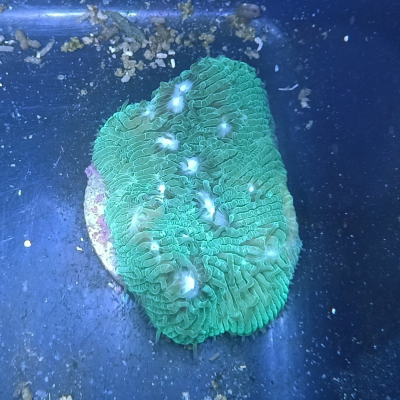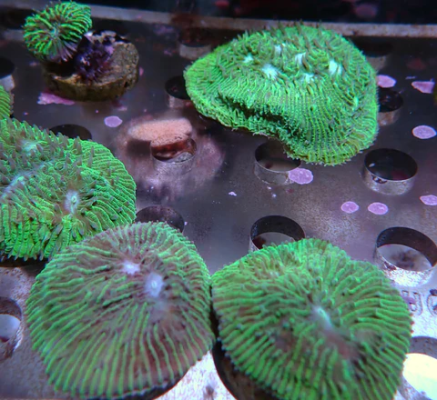I have had this coral for well over 10 years and have forgotten what it is. I think it's a fungia plate coral - I'm not certain, but it meets some of the descriptions. It's dome- or mound-shaped, about the size of a large fist, swells itself up from time to time, and is not attached to the rock it's sitting on. The colors in the photo are fairly accurate - green flesh with tannish/pinkish polyps.
Despite the outbreak of bubble algae around it, it's been very happy sitting in this spot for the last 10 years, although I moved a powerhead several weeks ago and I'm afraid it may be getting too much current when that powerhead kicks in.


Despite the outbreak of bubble algae around it, it's been very happy sitting in this spot for the last 10 years, although I moved a powerhead several weeks ago and I'm afraid it may be getting too much current when that powerhead kicks in.





















